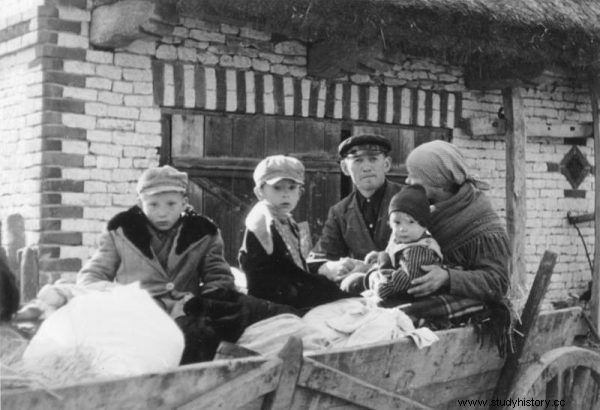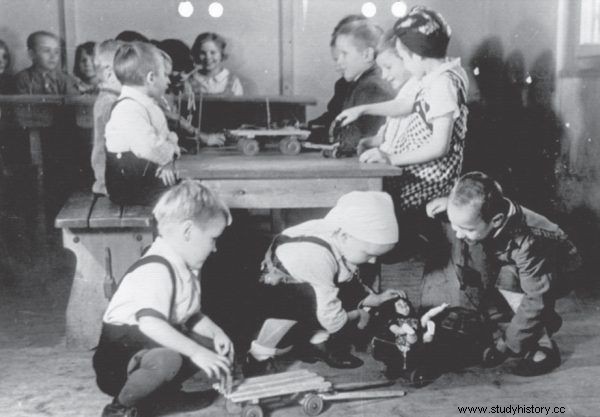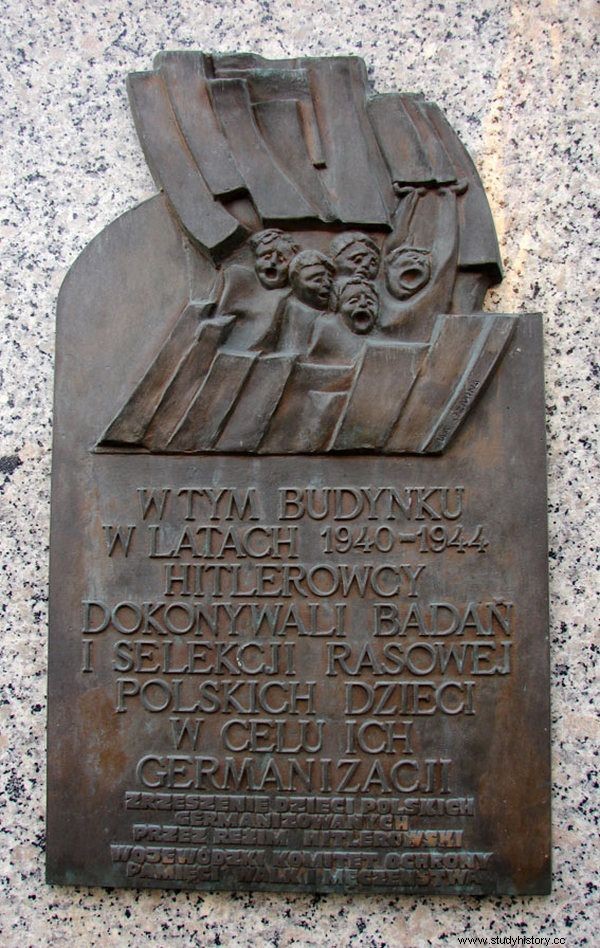They were taken from orphanages or straight from the street. Not infrequently, they were simply snatched from despairing parents. Each of them was planned to be brought up to be an exemplary German. Can we even approximate how many "racially good" Polish children were deported deep into the Reich during World War II?
The exact number of children who ended up in Germany during the war is very difficult to estimate today. According to Roman Hrabar, who fought with determination to recover them in the post-war years, it could be as high as two hundred thousand. In turn, German research, based mainly on the preserved documents of Lebensborn, an institution established to "breed" the race of superhumans, gives a number ten times smaller.
Why such great discrepancies? It should be remembered that the process of kidnapping Polish children had started before the action was even organized. It was associated with the displacement and displacement of people from villages, towns and regions at the very beginning of the German occupation.
Kidnapped during resettlement
Less than a year after the outbreak of the war, the Germans carried out three resettlement actions in the Wartheland, the victims of which were over a quarter of a million inhabitants. It is known that during the last of them, which took place on March 15, 1940, almost 2,400 people destined for Germanization were deported deep into the Reich. Children constituted a large percentage of this group.

During the occupation, Germans could kidnap up to 200,000 Polish children.
A similar fate awaited the inhabitants of Żywiec, from where 15,000 people were displaced, and the Ciechanów Land, where almost 12,000 inhabitants left. However, the most brutal action was carried out in the Zamość region, which was to become a colonization paradise for German settlers in the future. Over 110,000 Poles were expelled from there. Some were destined for "re-Germanization", others were sent to forced labor, and those who did not meet the racial requirements - to Brzezinka.
At the same time, children and infants were watched carefully. They were subjected to medical examinations. As the book quoted by the authors says, “Now you are Germans. The shocking fate of stolen Polish children ” Agnieszka Jaczyńska:
The children were examined for external appearance, skull structure, orbital spacing, hair and eye color. Those of the right age were qualified for Germanization. Children were hung around their necks with wooden tablets with the Ki symbol (Kinderaktion) on them and additionally given numbers.
Young Poles considered racially valuable were taken away from their parents by force. They were sent to special temporary camps, where they were subjected to regular brainwashing. About 4,500 of them ended up in Germany forever.

Babies the most attractive
The longer the war lasted, the greater was the need for a "racially pure" population in the Third Reich. The German army was bleeding out on all fronts, and Lebensborn, intended to mass-produce model Aryans, turned out to be inefficient. As a result, the process of kidnapping Polish children began to gain momentum.
"New Germans" were also won by taking children from forced laborers brought from Poland. There was a lot to choose from. According to Dariusz Kaliński, the author of the book "Balance of harms. What the German occupation of Poland really looked like ", a total of almost 3 million Poles, including prisoners of war, worked on German farms or factories.
Of course, the greatest interest of the Nazis was in infants. After all, in their case all the tedious work related to resetting the child's memory was eliminated. Those who met the racial criteria went to foster families. Worse fate awaited those who did not pass the selection. As the authors of the book "Now you are Germans. The Shocking Fate of Plundered Polish Children ”:
The newborns were kept in harsh conditions designed to lead to their slow starvation and at the same time they were tormented to keep up appearances towards their mothers. It was concluded that in the event of the immediate death of a child, the erratic reaction of women could reduce their motivation and productivity at work.

A propaganda photo showing how well the children of forced laborers in special centers were supposed to live. Illustration and caption from the book "Now you are Germans. The shocking fate of stolen Polish children ”.
Lost forever
It is worth emphasizing that the new German families most often had no idea of the child's actual parentage. This led - after the war - to further family tragedies. Alojzy Twardecki, previously Alfred Hartmann, learned the truth only a few years after the end of the conflict. For him - a proud young German - the news that his parents are Poles was shocking. He recalled:
Yes, I was a proud German Rhineland. I fanatically heiled, I treated Poles as something worse, I hated the French. I was impressed by the men in well-tailored German uniforms. (...) I soaked up all of this, and years later I had to change and revise everything. It took me ten years to sort out my brain, my heart.
Twardecki, after the death of the adopted German mother, returned to Poland and finally lived with his biological mother. Its story, however, is unique. Most of the children kidnapped by the Germans lost their identity and biological parents forever.

Only about 15-20% of the abducted children returned to Poland after the war. The photo shows a plaque placed on Piotrkowska Street in Łódź, commemorating children subjected to research and racial selection for the purpose of Germanization.
This is confirmed on the pages of the study "You are now Germany. The Shocking Fate of Plundered Polish Children ”Dr. Dorothee Schmitz-Köster:
Only 15-20 percent. children stolen in Poland during the German occupation returned to the country after the war:home, to Polish relatives or to foster parents. Those who stay in Germany often don't know they come from Poland.
Historians are convinced that people unaware of their Polish origins live in German cities and towns to this day. How many are there? We'll probably never know. Suddenly, however, the figure of 200,000 given by Hrabar does not seem so overstated ...
Buy a book at a discount at the Publisher's bookstore

